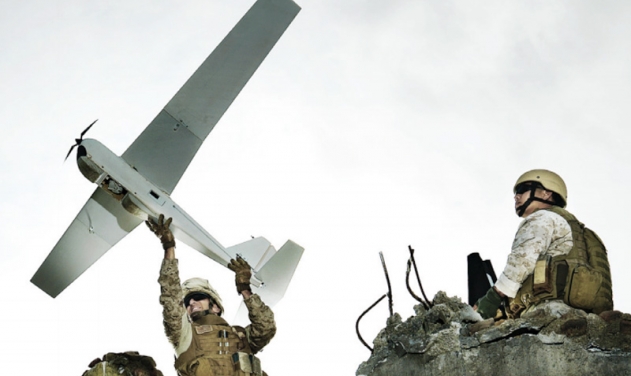New UAS System Improves Situational Awareness and Mission Performance: US Army

The US Army Aviation Development Directorate (ADD) has developed a system enabling an Air Mission Commander to manage multiple unmanned aerial systems simultaneously, resulting in faster completion of mission tasks without increasing operator workload.
The program is called Supervisory Controller for Optimal Role Allocation for Cueing of Human Operators, referred to as SCORCH, the army press release said Wednesday. The program is scheduled to conclude in May 2018.
"SCORCH is a system consisting of intelligent UAS autonomous behaviors and an advanced user interface that allows a single operator to effectively control up to three UAS simultaneously," explained ADD Engineering Research Psychologist, Dr. Grant Taylor. "The SCORCH system was designed specifically to support an AMC on board a manned helicopter during Manned-Unmanned Teaming operations, but our team has also demonstrated similar concepts in a UAS ground control station context."
MUM-T is the synchronized employment of manned and unmanned air and ground vehicles, robotics, and sensors to achieve enhanced situational understanding, greater lethality, and improved survivability.
ADD, part of the U.S. Army Aviation and Missile Research, Development, and Engineering Center, oversees the development of new autonomous behaviors to ensure they are relevant to the Army's MUM-T concept of operations. These autonomous behaviors support the project goal of expanding the MUM-T mission from manually controlling a single UAS to supervising multiple semi-autonomous UAS from a manned aircraft crewstation without compromising the operator's primary mission.
"The AMC delegates control of mission tasks to one or more UAS. The SCORCH system executes the tasks, notifying the AMC when critical decision points are reached," said Taylor.
Amit Surana of the United Technologies Research Center explained, "SCORCH provides a unique synergistic integration of recent technological advances in the areas of human/machine interaction, autonomy, and cognitive sciences into a cohesive warfighting system."
The interface was optimized for multiple UAS control and features a glass cockpit with touchscreen interaction, a movable game-type hand controller with its own touchscreen display, an aided target recognition system, and other advanced features.
The SCORCH project began in August 2013, intending to demonstrate an Army-relevant application of two previous basic research efforts funded by the Institute for Collaborative Biotechnologies, Santa Barbara, Calif. UTRC has partnered with ADD and assisted in the integration of the SCORCH system into the Army simulation environment.
"UTRC has worked closely with ADD in developing the supervisory control interface, software for new autonomous behavior, and other advanced decision aiding features," said Dr. Surana. "The purpose of this ongoing collaboration is to mature previous ICB-funded basic research efforts related to network and cognitive sciences for development of key advanced features within the SCORCH system".
During recent experimental evaluations, 16 Army aviators completed two days of training, testing, and interviews to evaluate the SCORCH system. The ADD team recorded results that revealed the aviators adapted quickly to the change in mission execution, from direct control to supervision of automation.
One of the participants explained, "When I had moments of lower workload, I could think ahead to the next phases of the mission and commit UAVs to those tasks if they weren't needed for the immediate task."
The experimental results successfully demonstrated that the SCORCH system improved situational awareness and mission performance without increasing workload.
"To date, we have completed two rounds of development and experimental evaluation in our simulator located at Moffett Field, Calif.," Taylor said. "We are currently working on revisions based on feedback from the first two experiments, which will be tested in a higher fidelity simulator currently being built at the AMRDEC Systems Simulation and Development Directorate facility at Redstone Arsenal, Ala".











